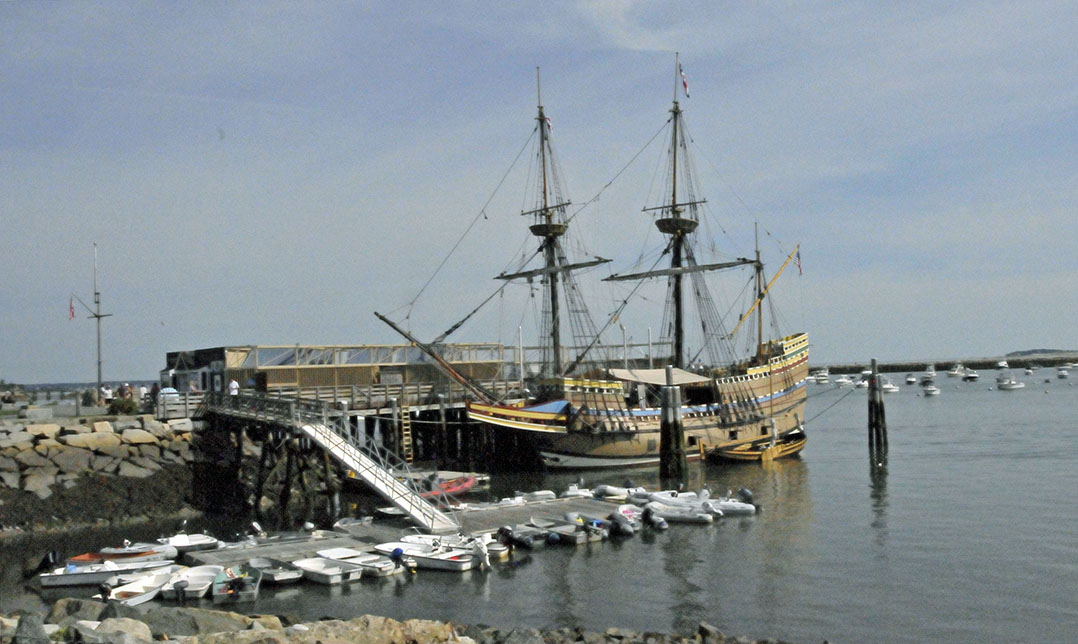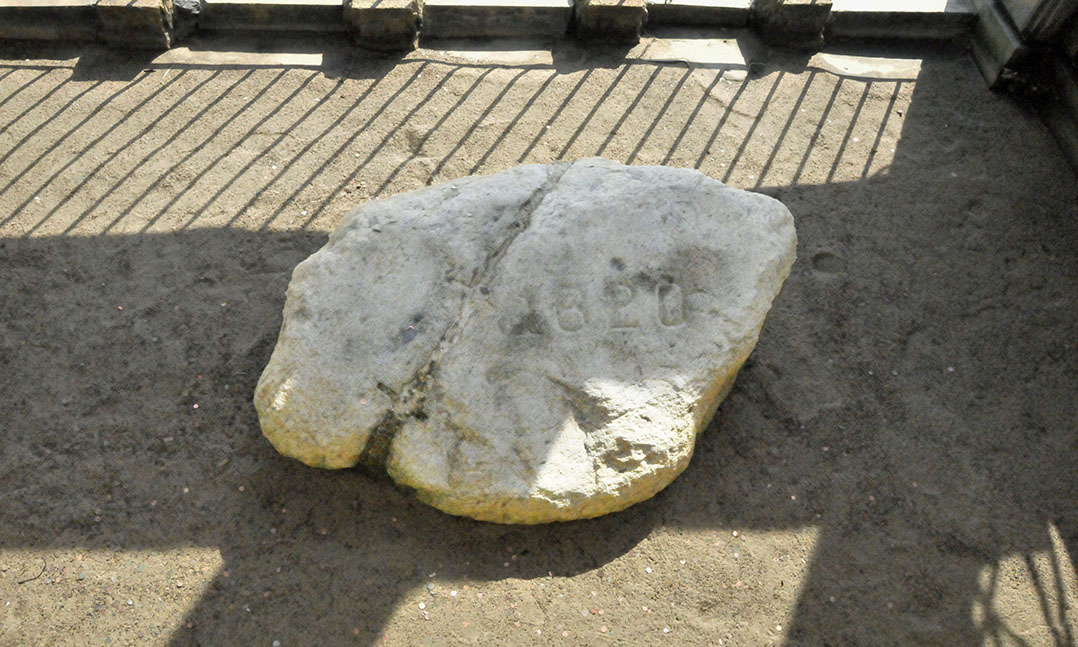Last week, we visited Provincetown, Mass., where the Pilgrims first came ashore in the New World. Today, as we return from Cape Cod, we visit Plymouth, Mass., and its famous rock.
On Nov. 11, 1620, the Mayflower landed near Provincetown. After 41 male passengers signed the “Mayflower Compact” while still onboard, the passengers disembarked. Because of the harsh winter conditions, most of them went back onto the ship. After three expeditions identified a suitable site for a farming settlement, the Mayflower sailed across Cape Cod Bay, arriving near what is now Plymouth on Dec. 18, 1620. During the following winter, the passengers lived on the ship, finally going ashore in March 1621. None of the writings of the Mayflower passengers made any reference to going ashore on or near a rock, let alone a specific rock. However, 120 years later, a local resident proclaimed that a 10-ton boulder identified during construction of a wharf in Plymouth Harbor was a literal stepping-stone as the Pilgrims walked ashore. Despite its implausibility, Plymouth residents promoted the story and the legend that “the Pilgrims landed on Plymouth Rock” was born.
In the years since 1741, Plymouth Rock has been broken, moved around town and cemented back together. So much of the original boulder has been chipped away for souvenirs that only about a third remains. Today, the rock, with “1620” carved into it, lies higher than where it originally lay under a stone portico erected in 1920. Nearby is the Mayflower II, a replica of the original ship that sailed from Plymouth, England, to Plymouth, Mass., in 1957 and is now on the National Register of Historic Places. Plymouth, with a population of about 60,000, is a pleasant coastal town about 40 miles southeast of Boston, offering some of the best whale watching, shopping and restaurants in the area.






